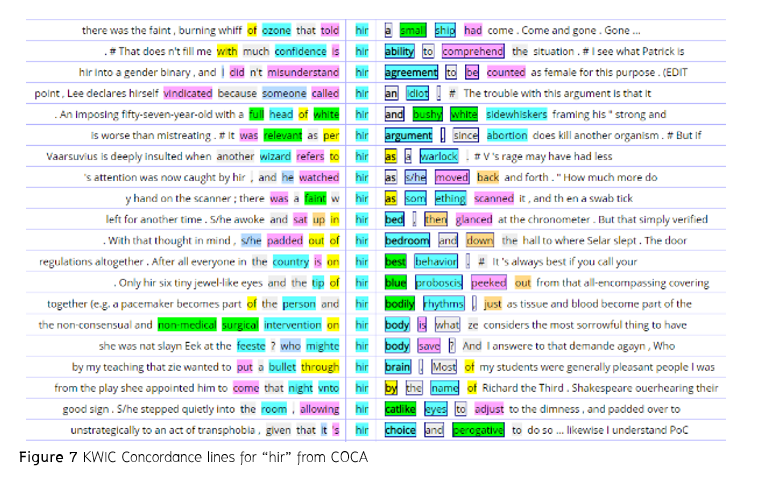A Corpus-Based Analysis of References in English TV Series to Refer to Non-Binary Gender: A Case Study of Queer as Folk, Season One, Episode One to Five
Main Article Content
Abstract
The aim of this current study is to explore the common references that are commonly used to refer to non-binary people in English media used in Queer as Folk TV series, Season One, Episode One to Five. In order to collect the data, the AntConc program version 3.5.7. was used as a main tool to gather the data, which were compiled and downloaded by the researchers from an online script of Queer as Folk TV Series Season One, Episode One to Five. The design of the study relied on the quantitative paradigm in which the frequencies of the occurrence nodes were used to obtain the findings. The researchers employed corpus linguistics as a tool to analyze the frequencies in wordlist of the AntConc program to interpret the data. The findings unearthed that the head noun “Michael” was the most frequent word which was not considered to be function word shown with 892 frequencies of the occurrences. After that the words “he, his, him and Emmett” were shown with 594, 477, 296 and 282 frequencies of the occurrences, respectively. Only one type of the function word included in this study was pronouns since it belonged to the objective of the research in exploring the references. The present study yielded the different results from the previous studies in which gender neutral pronouns were introduced to use e.g., Ze, Hir, and others but this study revealed the absence of gender neutral pronouns. The study shed light on the use of references or gender pronouns when communicating to people with gender diversity.
Article Details

This work is licensed under a Creative Commons Attribution-NonCommercial-NoDerivatives 4.0 International License.
The articles published are copyrighted by the Graduate School, Chiang Mai Rajabhat University.
The opinions expressed in each article of this academic journal are solely those of the individual authors and do not reflect the views of Chiang Mai Rajabhat University or its faculty members. The responsibility for the content of each article rests entirely with the respective authors. In the event of any errors, the authors alone are responsible for their own articles.
References
Anthony, L. (2000). Developing AntConc for a new generation of corpus linguists. In S. Granger, J. Hung, & S. Petch-Tyson (Eds.), Computer learner corpora, second language acquisition and foreign language teaching (pp. 3-17). Amsterdam: John Benjamins.
Biber, D. (1993). Representativeness in corpus design. Literacy and linguistic computing, 8(4), 223-257.
Bodén, E., & Hammer, S. (2008). Gender structure in children’s books for preschool. (Unpublished bachelor thesis, Mälardalen’s College).
Boontam, P., & Phoocharoensil, S. (2018). Effectiveness of English preposition learning through data-driven learning. 3L: Language, Linguistics, Literature, 24(3), 125-141. DOI: http://doi.org/10.17576/3L-2018-2403-10
Bowker, L., & Pearson, J. (2002). Working with specialized language: A practical guide to using corpora. London: Routledge.
Brammer, R., & Ginicola, M. M. (2017). Counseling transgender clients. In M. M. Ginicola & J. M. Filmore (Eds.), Affirmative counseling with LGBTQI_ people. Virginia: American Counseling Association.
Brauer, D. (2019). Complexities of supporting transgender students’ use of self-identified first names and pronouns. Journal of College and University, 92(3), 11-12.
Darr, B., & Kibbey, T. (2016). Pronoun and thoughts on neutrality: Gender concerns in modern grammar. Journal of Undergraduate, 7(1), 73-75.
Evison, J. (2010). What are the basics of analysing a corpus? In A. O’Keeffe & M. McCarthy (Eds.), The routledge handbook of corpus linguistics. London: Routledge.
Klomkaew, S., & Kanokpermpoon, M. (2021). The use of references in English printed media to refer to LGBT people. (Master’s thesis, Thammasat University).
Klomkaew, S., & Kanokpermpoon, M. (2022). Ze is better than Hir? A corpus-based analysis in digital news and magazines. The New English Teacher, 16(1), 125-152.
Knutson, D., Koch, J. M., & Goldbach, C. (2019). Recommended terminology, pronouns, and documentation for work with transgender and non-binary populations. Practice Innovations, 4(4), 214-224. https://doi.org/10.1037/pri0000098
Leech, G. (1991) “The state of the art in corpus linguistics.” In Aijmer, K. & Altenberg, B. (Eds.) English corpus linguistics: Studies in honour of Jan Svartvik. London: Longman.
Lindquist, H. (2009). Corpus linguistics and the description of English. Edinburgh: Edinburgh University Press.
McGlashan, H. & Fitzpatrick, K. (2018). I use any pronouns, and I’m questioning everything else: Transgender youth and the issue of gender pronouns. Sex Education, 18(3), 239-252.
Meyer, I. H. (2003). Prejudice, social stress, and mental health in lesbian, gay, and bisexual populations: Conceptual issues and research evidence. Psychological Bulletin, 129, 674–697. http://dx.doi.org/10.1037/0033-2909.129.5.674
O'Keeffe, A., McCarthy, M., & Carter, R. (2007). From corpus to classroom: Language use and language teaching. Cambridge: Cambridge University Press.
Siebler, K. (2012). Transgender transitions: Sex/gender binaries in the digital age. Journal of Gay & Lesbian Mental Health, 16(1), 74-99. doi:10.1080/19359705.2012.632751
Sinclair, J. (1990). Collins COBUILD: English grammar. London: Collins.
Stewart, D., Renn, K. A., & Brazelton, G. B. (2015). Gender and sexual diversity in U.S. higher education: Contexts and opportunities for LGBTQ college students. San Francisco: Jossey-Bass.
Törmä, K. (2018). Collocates of trans, transgender(s) and transsexual(s) in British Newspapers: A corpus-assisted critical discourse analysis. (Master’s thesis, Mid Sweden University).
Udry, J. R., & Campbell, B. C. (1994). Getting started on sexual behavior. Chicago: The University of Chicago Press.
World Health Organization. (2013). Gender. Retrieved from http://www.who.int/topics/gender/en/

